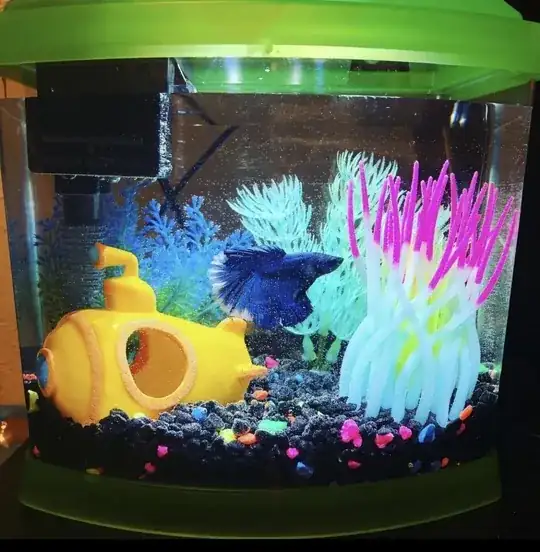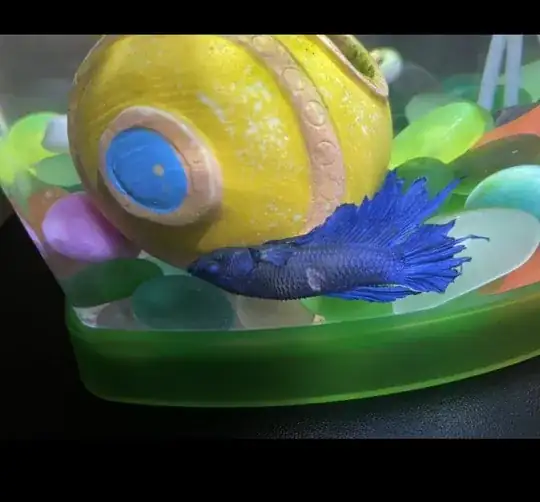This is Ringo.
I’ve had him for almost 2 years and he’s been happy until the last week or so. He lives in a 1 gallon (3.8 L) tank (I know it’s small, blame the Petsmart employee who suggested it) and he has a filter and a heater. I change his water at least one time a month, and I clean everything during that time and change the filter. I use tap water with a water conditioner when I change the water and I use a bacteria starter every morning for the next five days after changing. He’s gone through spells where he wouldn’t eat much, but he’s always perked back up; however, lately he’s been laying on the bottom of the tank, either right side up or upside down, or laying in his little submarine house, and he hasn’t been eating at all.
Yesterday I noticed this white-ish sore on his side. Can someone help me please? I just don’t want him to suffer.
Unfortunately Ringo passed away less than 12 hours after I posted this. Yes he was in a small tank but I did do my research and dosed his water with the correct amounts of conditioner, bacteria starters and medications according to the amount of water in the tank. I’ve had a betta fish before in a tiny less than half gallon bowl with no filter or heater in tap water that lived over 4 years. I did what I could with the information I was given and found via petsmart and the internet. The plants were not sharp plastic, they were made of rubber. Nothing in the tank was sharp. I tried my best but unfortunately it wasn’t good enough. I’m sorry to Ringo and thank you to everyone who gave helpful advice.

